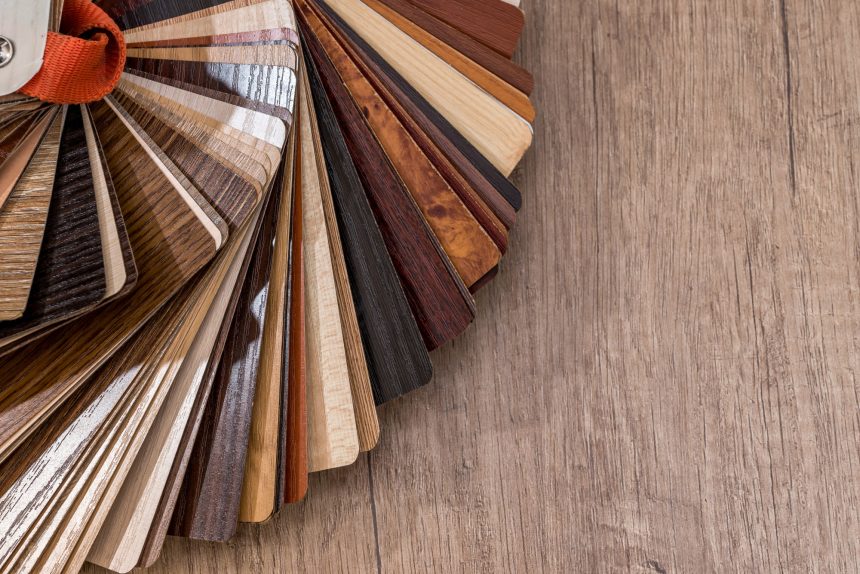According to the latest Craftsman survey, new flooring’s a priority for at least 15% of people with home improvement plans for 2021.
Are you one of them? If so, you’ve probably heard about laminate flooring by now. You might also know that there are 57 different types of laminate flooring.
How do you choose from such a huge variety? Keep reading to find out a little more about the most important ones and where they fit into your home.
More About Laminate Flooring
Laminate flooring comprises several layers of material. Together, these form a firm type of flooring that’s long-lasting and comfortable underfoot.
It usually has four layers as follows:
- Base or backer layer of melamine or hardwood
- The core layer of fiberboard saturated with resins for durability
- Decor layer with a printed design
- Wear layer of transparent UV-resistant acrylic or melamine
Engineered hardwood is also a type of laminate flooring but it has a core layer of hardwood and a thin layer of hardwood instead of printed material in the decor layer.
The Benefits of Laminate Flooring
Laminate flooring offers most of the aesthetic appeal of hardwood without any of the drawbacks. It’s cheaper, easier to maintain, and water-resistant.
It’s also scratch-resistant and impact-resistant. Laminate flooring doesn’t fade in direct sunlight, thanks to its UV-resistant wear layer and it’s super-easy to clean.
Things to Know About Laminate Flooring
Laminate flooring’s available in different thicknesses and widths. The thicker it is, the longer it will last. Wider planks mean you’ll need less of them to cover your floor.
You should always install underlay with your laminate floors. This material protects your floor from leaks underneath the subfloor. It also adds an extra layer of thermal insulation and reduces noise when you walk on the floor.
Abrasion Criteria (AC) ratings are also important when choosing laminate flooring. Higher ratings mean the floor can put up with more wear and tear.
For instance, a laminate floor with an AC1 rating is ideal for low-traffic areas like bedrooms, while AC5 rated floors can put up with heavy-duty traffic in a commercial setting.
Now that you understand the basics, let’s get into the finer details.
Types of Laminate Flooring According to Installation
One way to classify laminate flooring is according to how it’s installed. This is particularly relevant if you’re planning a DIY installation.
These are the different ways you can install laminate floors:
Glue-less Laminate Flooring
As the name suggests, you don’t need any glue for this type of installation. Once you’ve mastered how to do it, it’s an easy way to install these floors.
Glued Laminate Flooring
This type of installation results in an extremely strong floor. It’s time-consuming and more expensive than glue-less installation since you need to glue each edge together as you go along.
Pre-Glued Laminate Flooring
Pre-glued laminate planks already have a layer of glue on the underside, which saves a lot of mess and fuss. Check the installation instructions carefully since you’ll need to dampen some of the edges to activate the glue.
You need to work fast with this type of flooring, but it also has a convenient click-lock system.
Laminate Flooring with Attached Underlayment
These are the easiest and most convenient types of laminate flooring planks. All you need do is snap them together and lay them in place. Everything else is already done.
Types of Laminate Flooring Looks
Thanks to the versatility of the decor layer, you can get laminate flooring that imitates all the most popular types of flooring. The most common ones are:
Wood
Wood-look laminate and engineered flooring are the most popular of all the varieties. Engineered wood flooring’s been the market leader since 2019.
This type of flooring has an upper layer of wood with an acrylic finish for extra durability.
The planks are thicker than the other varieties of laminate flooring. You can also sand and refinish them after a few years if needed.
You can choose from all the most popular wood species, like:
- Acacia
- Beech
- Elm
- Cherry
- Mahogany
- Teak
- Walnut
- Oak
Some types of wood-look laminate offer supreme water and scratch resistance, like Armstrong Audacity, Shaw Repel, and Mohawk Revwood waterproof laminate.
Plastic
These are an affordable type of laminate flooring that’s available in any design. It’s not suitable for bathrooms as it retains a lot of moisture.
Tile
Instead of planks, this type of laminate floor comes in tiles measuring 12 to 24 inches square. When installed they look identical to ceramic tiles but they’re much warmer underfoot.
Stone
This type of laminate flooring closely mimics the beauty, texture, and rich color variations of real stone. It’s a much cheaper option than real stone and the result is a totally natural-looking floor.
Laminate Floor Types Based on Texture
The best laminate floors feel as good as they look. They achieve this by imitating the feel as well as the appearance of the material they’re mimicking, be it wood, stone, or tile.
When shopping for textured flooring always hold it up to the light at various angles, so you can see how it will change its appearance during the day. This will also help you choose which direction to lay the laminates in your room.
If you’re choosing a floor for your bathroom, kitchen, or entryway, choose a thicker texture. The thicker it is, the more slip-resistant it is. These are the different varieties of laminate flooring based on texture:
Smooth Look Laminate Flooring
Smooth laminate tiles closely imitate marble and ceramic floors. Since there are no grooves on the finished floor, it’s a lot easier to clean than the original type of tiles.
Embossed Laminate Flooring
Embossed laminate flooring comprises heat-sensitive polymers raised in different patterns. They come in square blocks or rectangular strips according to your preferences.
There are two main types:
Textured embossing is a general technique that doesn’t match the grooves of the printed grain. It does look like natural wood but it’s not very realistic on close inspection.
Embossed in register means the embossing precisely matches the grooves of the printed grain to create a superbly realistic finish.
Hand-Scraped Look
This technique adds an attractive antique look to your flooring. It’s only available on engineered hardwood flooring.
Laminate Flooring Types According to Construction
Although all laminate flooring has the same basic structure, there are two main differences in how it’s manufactured. These are:
High-Pressure Laminate Flooring (HPL)
Manufacturers fuse these planks in a single or two-step process. The costlier brands use a high-pressure method whereby they glue several layers together first, fuse them with other materials, and finally glue them onto a plank.
This creates a more durable plank with a harder finish.
Direct Pressure Laminate Flooring (DPL)
This is the most common manufacturing process for laminate flooring. With this method, manufacturers assemble all four layers, then press and heat them to form a bond.
It’s the cheapest way to make laminate flooring and saves the consumer money, although the planks aren’t as long-lasting.
Types of Laminate Flooring Based on Design Aspects
This is where the topic of laminate flooring gets interesting. There are hundreds of different design options to choose from
Gloss Level
You can choose from matt finish or high gloss laminate flooring. Neither finish has any impact on the performance of the floor, but matt floors do hide minor scratches and scuffs more effectively.
Your choice between these two depends on your preferences or your existing décor.
Patterns and Colors
From simple to sophisticated, you’ll find a laminate floor with a pattern that suits your style. Some of the most popular ones include:
- Traditional floorboard planks
- Thin strip flooring
- Wide plank floorboards
- Herringbone patterns
- Chevron patterns
Once you’ve settled on a style of flooring, your decisions aren’t over yet. Laminate flooring is also available in a huge range of colors.
Wood finishes usually comprise a choice of light, medium, or dark brown depending on the species of wood you choose.
If you opt for one of the printed laminate flooring choices, there’s no limit. Some manufacturers will even make custom prints for you, at a price, of course.
Flooring Edges
Although this aspect mainly affects the installation of your floor, it can also impact the final look. The main types are square-edged planks, beveled edge planks, and pressed edge planks.
Extra Features Offered by Laminate Floor Brands
The laminate flooring market’s a competitive one. Thus, the top brands are constantly trying to outdo each other by offering more advanced types of flooring.
As a result, most modern laminate flooring offers the following perks:
- Water-resistant or waterproof floors
- Enhanced noise resistance
- Scratch resistance
- Compatibility with radiant floor heating
Their offerings are also becoming increasingly easy to install and offer low-maintenance features. Most high-end laminate floors require no waxing or polishing to stay in top shape.
How Affordable is Laminate Flooring?
Affordability is one of the biggest benefits of laminate flooring. The average price of laminate flooring is from $1 to $3 per square foot, although the high-end versions can set you back up to $12 per square foot.
Prices vary depending on the quality of the print layer as well as the thickness of the wear layer. It’s by far the best way to get the look of hardwood flooring without having to pay an average of $8 per square foot for the real thing.
You’ll also save on installation costs for this type of flooring. Since it’s easy to DIY your installation, all it costs you is your time and a little adhesive if you go the glue-down route.
If you do opt for a professional installation, you’ll pay about $5 per square foot, which is very little when compared to hardwood floor installation at around $20 per square foot.
Drawbacks of Laminate Flooring
While laminate flooring’s an attractive and affordable flooring option with many benefits, it doesn’t increase the value of your home like hardwood flooring does.
Many die-hard hardwood fans claim they can tell the difference right away, while other people never notice. So, if you’re selling your home, it can affect the prospective buyer’s decision, depending on their preferences.
Other people might prefer laminate flooring due to its low maintenance aspects.
Even the best quality laminate flooring’s never totally waterproof. Due to this, you should avoid installing it in rooms with floor drains or sump pumps. If you want to install it in your basement, always include a moisture barrier.
If you’re conscientious about cleaning up spills, laminate flooring’s a good option in the kitchen, but it won’t live up to the high moisture in your bathroom.
You can’t refinish laminate flooring like real wood. You’ll have to replace it once it’s worn out. You can only refinish engineered hardwood floors a few times before the top layer’s completely worn off.
Some of the cheaper brands of laminate flooring feel synthetic and hard underfoot.
Unfortunately, laminate flooring’s not eco-friendly either. The plastic wear layer doesn’t degrade in landfills. Some of the lower-end brands might also contain harmful chemicals that release toxic VOCs.
Lately, stricter EPA guidelines have helped reduce incidences of these harmful VOCs.
The best way to ensure you get a safe, durable, and efficient laminate floor is by shopping around for the most reputable brands and comparing all your options before you commit.
Find More Inspiration
Now that you’re a little more informed about the different types of laminate flooring, it’s easier for you to make the best decision for your home.
Information equals spending power when it comes to saving money on life’s little luxuries. Explore our blog to find more cost-effective inspiration for your home and life in general.














